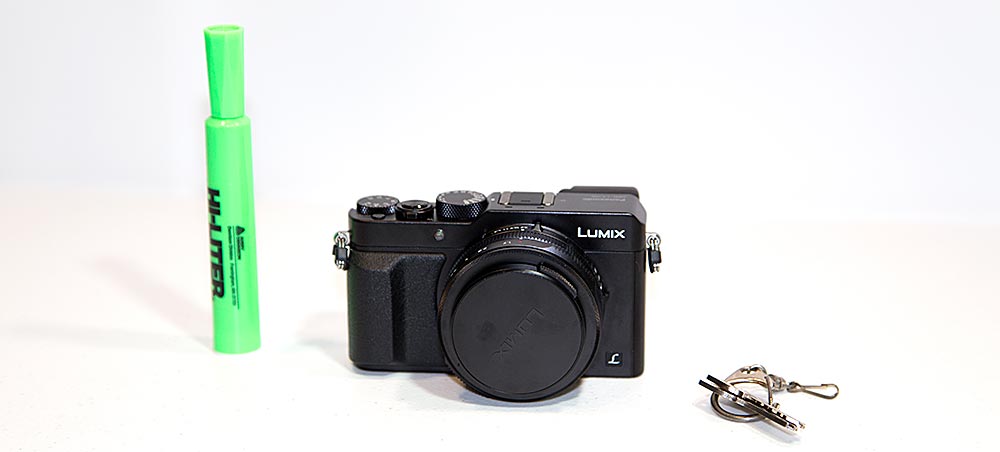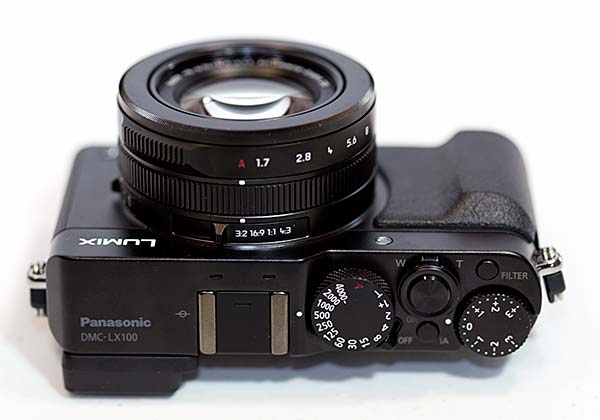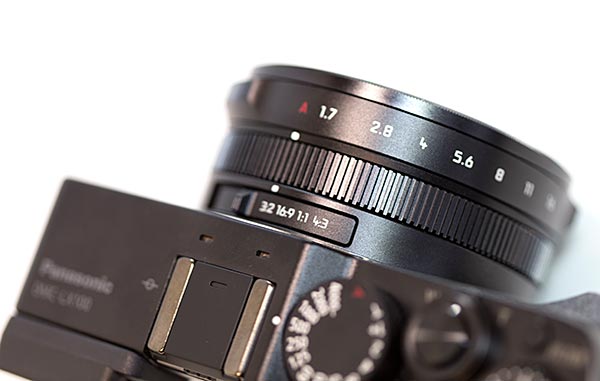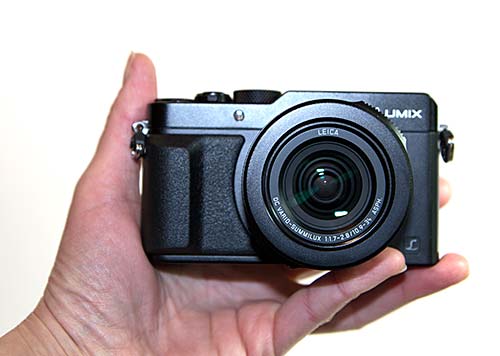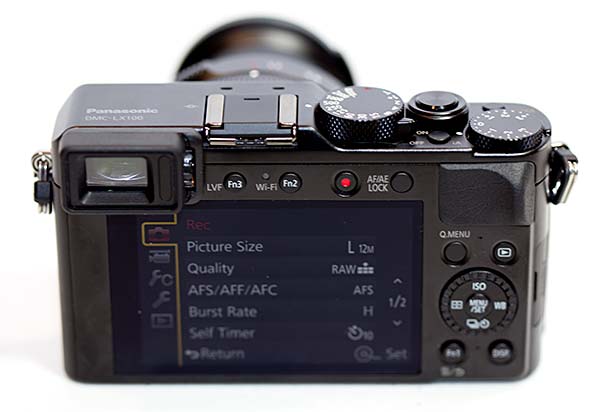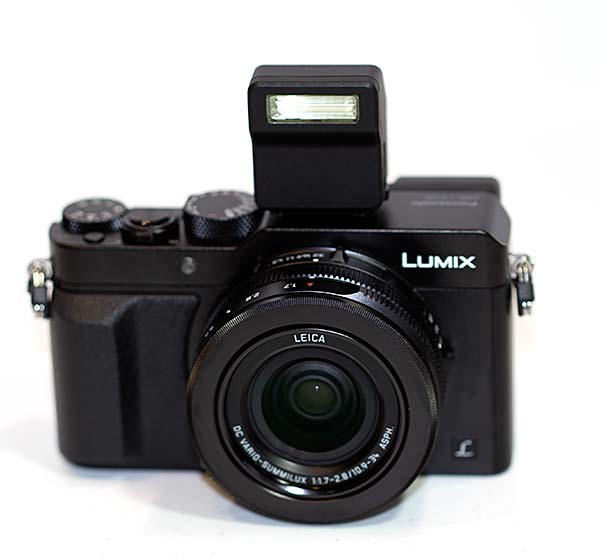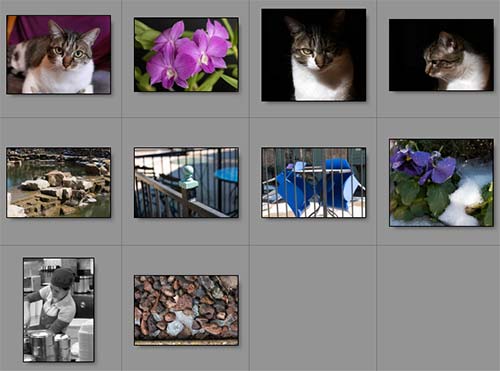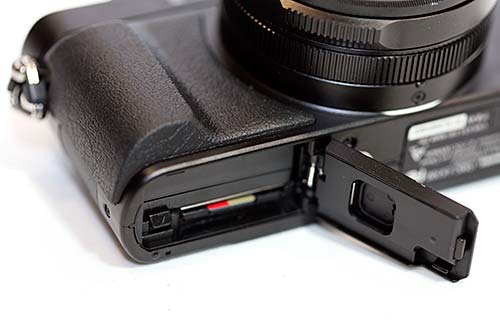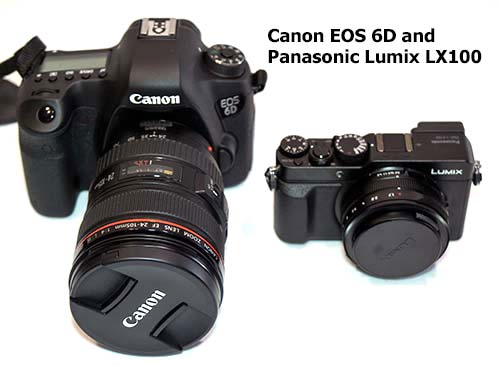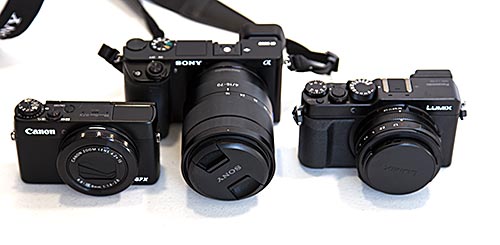
|
|
|||||||
|
Home > Camera Reviews > Panasonic Lumix DMC-LX100
Panasonic Lumix LX100
What's Hot: Excellent image quality, large sensor for a compact camera, fast and sharp Leica lens, decent battery life, superb ergonomics, sharp EVF. What's Not: No touch or tilt LCD, flash is a separate piece, a bit large for the pocket.
Reviewed March 9, 2015 by Lisa Gade, Editor in Chief (twitter: @lisagade, Instagram lisagadeMTR)
|
||||||
|
Despite murmurings and stark declarations, the dedicated digital camera like the laptop, is far from dead. Rather good camera phones, just like tablets, have helped elevate the camera and PC: we appreciate the portability and basic competence of the more affordable offerings, but they've made us appreciate what a good camera (or PC) can accomplish. For those who want optical zoom because a camera phone's fixed wide angle lens allows for only so much creativity, or improved detail or shallower depth of field, only a standalone camera will do the trick. Of course the quality has to be better than the iPhone 6 or Samsung Galaxy S5 to make the deal complete, and that's why low end point and shoots are a dying breed while higher end models thrive. For those who want better looking photos and zoom to capture distant subjects, high end pocket cameras like the excellent Sony RX100 mk III and Canon PowerShot G7X are perfect. Though they offer manual settings if you dig a little bit, they're perfect auto mode cameras that will take great shots with little effort. They're also incredibly tiny and will fit in most pockets (if you don't mind your $700-$800 camera mingling with pocket lint and spare change).
The Panasonic Lumix DMC-LX100 has auto mode too, and it does indeed do a great job helping you take excellent photos with little photographic know-how. But the point and shoot crowd isn't its intended audience. The LX100 is for experience photographers and those who want to learn more about how to shoot better photos using manual control. If you're a veteran dSLR photographer and even an old school film photographer, the little Lumix will impress. I've waited years for a highly portable counterpart to my dSLRs that didn't sacrifice depth of field, a fast lens and manual control. No, I'm not too weak to carry a big camera, but it has its drawbacks. You're on vacation and that big gear bag and 4 lbs. of camera around your neck aren't supposed to be the focus, are they? You want to shoot street photos or candids in public places without your subjects noticing you (or punching you in the face). The Lumix LX100 is a little bigger than the diminutive RX100, but smaller than the Canon PowerShot G1X mk II, Sony a6000 and Micro Fourth Thirds fixed lens and ILCs (Interchangeable Lens Cameras) that the LX100 also competes with. Throw a good lens on the A6000 (except a fixed wide angle) and you've got something that's certainly smaller than a Canon 5D mk 3, but big enough to spoil candid street shots. I've tried with my Sony a6000 and 16-70mm Zeiss f/4 zoom, and everyone says "look at the lady with the camera"... moment lost. That said, you'll need a jacket pocket or roomy cargo pants for the LX100. Me personally? It's an $800 camera, so I won't put it in my pocket anyhow and as a woman I have this handy thing called a purse. But for you guys who want to throw it in your 501's, well it's probably not the camera for you.
The Lumix 100 is also sold as the Leica D-LUX (Typ 109), and it speaks well of the camera that Leica is willing to put their name on it. The two cameras are identical in terms of hardware and Leica lens (same sensor, same everything). Leica changes the body styling a bit: the surface texture is different and they sadly remove the grip. The Leica version sells for $300 more, but it does include a lifetime license for Adobe Lightroom. I'm price-sensitive and already have Lightroom, so I'd opt for the Panasonic version, but you aren't me, are you? What makes the Lumix LX100/D-LUX 109 stand out beyond the manual controls and ergonomics? It has an even larger sensor than the RX100 and Canon G7X 1" sensors. Panasonic uses their 16MP Micro Four Thirds sensor, cropped to 12.8MP (we'll explain that later). That larger sensor (1.33") gathers more light and has larger pixel sites for better low light shooting and more depth of field. It has a lovely Leica f/1.7-f/2.8 24-75mm zoom lens that combined with the larger sensor yield more dSLR-like photos.
Ergonomics and Controls The Panasonic Lumix LX100 has a dense aluminum body that weighs 13.6 ounces and is available in all black or silver with a brown grip. It's an atavistic camera with an aperture ring on the lens, a shutter speed dial up top, an EV dial on the right top corner where it should be (+/- 3 EV in one third increments) and a traditional focus/zoom ring on the lens. The ergonomics are delightful with the controls not feeling as maddeningly tiny as on the RX100 and Canon G7X, and each control has excellent tactile feel and response. Our only complaint is that the aperture ring is in front of the zoom/focus ring, which is the reverse of normal. If you're old enough or artsy enough to have shot with film cameras, the controls will feel very familiar, and you'll never have to look at the manual to figure out how to shoot in Av or shutter priority mode. Simply turn the aperture ring from A to your desired aperture, and shutter speed works the same way. You want to shoot in Program mode? Set both the Aperture ring and shutter dial to A. There's no PASM mode dial here, because it's not needed. The only catch is that you'll have to remember to turn off iA (intelligent auto mode) using the handy iA button up top. For those who enjoy filter effects, there's a filter button on the top and you'll use the 3" 921K dot LCD and rear control ring to select your desired effect. The rear LCD is bright and accurate, but it doesn't tilt nor does it support touch, which is a shame. There's a very bright EVF with 1024 x 768 resolution and it's plenty sharp and well sized (I personally find the Sony RX100 III's too small). It's not perfect though- if you move the camera quickly you may see motion tearing, and the colors and contrast are so high that they don't accurately reflect the scene. Still, it's a godsend for those of us who are accustomed to composing with the viewfinder rather than an LCD.
The camera has the usual metal tripod mount in the center, and the battery/ SD card slot are beside it under a door that's nearly impossible to open when the camera is mounted on a tripod (that's true of most tiny cameras). The grip--yes, it has a grip! And it's a good-sized grip at that, at least relative to a camera this small. If you opt for the Leica-branded equivalent, you'll get a nice looking camera but you'll lose the grip. I find it very easy to hold the LX100 with my right hand and to shoot quickly one-handed thanks to the grip. Sorry, Leica. There's a focus illuminator lamp on the front and LVF and WiFi buttons on the rear that also function as Fn2 and Fn3, and an AE/AF lock button (yes, must have!). The rear controls are standard stuff: playback, display, a control ring with standard settings, and both menu and quick menu buttons. Speaking of WiFi, the companion apps for iOS and Android are a pleasure to use for image transfer and camera remote control. NFC aids pairing for Android devices, but Apple doesn't allow 3rd party access to NFC so you'll use a square barcode for iOS pairing. The camera design apparently left no room for a pop-up flash, so like the Sony NEX-5, the Panasonic includes an accessory GN7 flash. The flash fits into the camera's hot shoe, and you can use larger Panasonic flashes if you wish. The included flash is rigid so there's no bounce flash, not even the pull it back with a finger and wing it sort of thing you can do with the Sony RX100 III. Since it's not an absolutely tiny flash, it works up to 21 feet, but it does look a bit like a baby Cyclops eye when on the camera. Leica Lens Panasonic and Leica have teamed up again for the custom designed LX100 lens. It offers a fairly standard 24-75mm zoom range and you can zoom via lever on the body or lens ring. It's a smooth zoom that works well for video, but some photographers might wish it were a bit faster. We'd love to see a longer zoom range as with the Canon G7X--a true portrait 90mm or 100mm reach would make this camera even more versatile, but then it would also make the lens even larger. The lens certainly isn't small, nor could it be to cover the sensor and offer the f/1.7 aperture at the wide end and f/2.8 from 50 to 75mm. In fact, we suspect that Panasonic went with their cropped sensor solution in order to keep the lens a manageable size. The lens openning's diameter is actually smaller than the sensor--the bigger the sensor the larger (wider in terms of dimensions) lens you need. The cropping does allow for the unusual hardware switch that lets you change aspect ratio without altering field of view. It's a pretty cool and creative tool--you can switch between 16:9, 4:3, 3:2 and 1:1 aspect ratios.
The lens is extremely sharp at the center and corners aren't terribly soft. As with all compact zooms at the high end, the camera compensates via software for barrel distortion, and corners look good considering this. Unless you're shooting landscapes where pin sharpness across the entire field is a must (and you're pixel peeping at 100% magnification to carefully check), the lens will likely impress. The lens has a side switch for AF, manual focus and macro. If you switch to manual, the lens ring handles focus rather than zoom. Macro mode is very good: you can get quite close and capture some supremely sharp macro photos. It's head and shoulders above the RX100 and G7X for macro. There's no built-in ND (neutral density) filter, and the 1/4000th mechanical shutter speed and 1/16,000th electronic shutter speed help ameliorate this for photography. For video where you certainly don't want to use such high shutter speeds, screw on an ND filter (the lens has 43mm threads). |
Deals and Shopping:
Advertisement |
|||||
|

